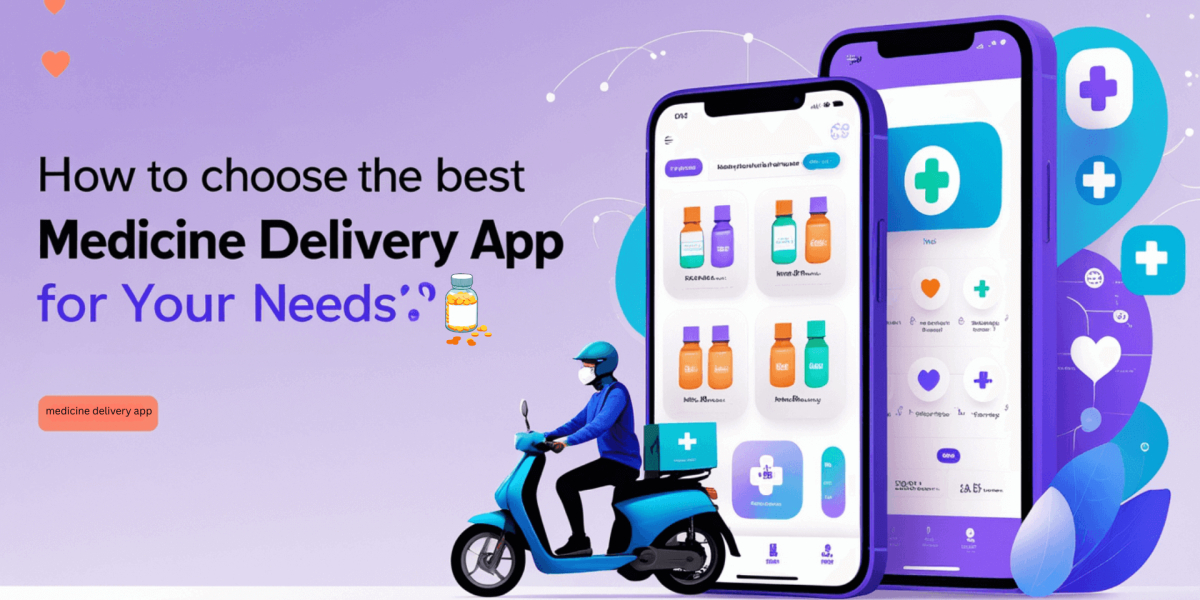What Is The Difference Between No-Code And Low-Code App Development?
- By Team NetWeb
- 03-01-2024
- Mobile App Development

App development has gone through major upgrades in recent years. With the advent of low-code and no-code solutions, it is not limited to only tech geeks. Now you don't need to code an app from scratch.
No-code and low-code app development solutions offer business ready-made features to build apps reducing time-to-market and cost. Thus, these solutions make app development feasible and accessible for all.
However, there’s a catch.
For the majority of you, low-code and no-code development sounds similar. Both are similar in their motive to get away from rigorous coding. However, there are fundamental differences in the development process and the type of app you will build using the two approaches.
This blog delves into the similarities and differences between low-code and no-code app development.
What Is No-Code Development?
No-code app development refers to the process of creating software applications without traditional coding techniques. In this approach, you use ready-made templates, drag-and-drop elements, and other features to quickly build an app.
In simpler words, you don’t even need to write a single line code to build an app. No-code app development significantly reduces the time-to-market and cost factors. Thus, empowering businesses to quickly build and launch their apps in the market.
However, you can only build basic functional apps with no-code solutions. It is not suitable for complex and multi-feature apps.
How can you build no-code apps?
You can use the no-code platforms to build such apps. These are online platforms with visual drag and drop functionality and ready-to-use elements to help you create apps.
Imagine how easy and convenient it is to create apps using no-code platforms. All you need is a good internet connection and a computer to build an app.
Then why is no-code app development receiving criticism?
The convenience that no-code solution offers is the reason for its downfall. Though no-code platforms advertise full customizations, the scope is limited. The readymade templates and framework largely depend on the developer who has built it leaving you with little space to modify them. Thus, you will face difficulty aligning the app components as per your business needs.
Another drawback is that you don’t have access to the source code. This makes it impossible for you to assess the quality and security of the code.
And don’t even think about building apps for enterprises. No-code features don’t have the scalability to build larger applications.
Further, no-code platforms do not give the flexibility to deploy apps to private cloud or on-premises infrastructure. You will be restricted from using their public cloud.
If you are thinking of building captivating user-friendly apps then no-code platforms won’t help you. The apps mostly focus on operational efficiency and don’t prioritize user experience elements. Plus, custom third-party integrations are also not supported which is a major drawback for no-code apps.
Keeping in view the limited capabilities of no-code platforms, the question is – How are they able to sustain till now?
No-code platforms are great for non-tech people to express their ideas about the app. They mostly use it to build app prototypes to bring their ideas in a more understandable way before the IT team.
Pros:
- Removes the coding from app development
- Cost-effective and time-efficient
- Gives opportunity for non-tech people to build apps
- Quicker development process
Cons:
- Limited customizations
- Cannot build highly functional apps
- Restricted app deployment to the public cloud
- App security and performance is an issue
- Not suitable for large-scale projects
What Is Low-Code Development?
Low-code development is the process of software application development that minimizes the use of extensive coding. It is a middle ground between a full-fledged coding technique and a complete absence of coding (no code).
Similar to no-code platforms, low-code also offers drag-and-drop features. But it also allows manual coding and scripting enabling developers to customize the app as per their needs.
This differentiator feature of the low-code solution makes it a desirable approach for business. The goal here is to accelerate the development process and reduce the complexity of complex traditional coding.
Unlike no-code, low-code platforms offer scalable architectures and flexibility for cloud or on-premises deployment. Moreover, the developers also have control over app testing and performance tooling. Therefore, ensuring the development of secure, bug-free, and highly functional apps.
These might seem like the biggest advantages of low-code platforms. However, what’s impressive is that it allows developers to expand the app’s capabilities with their code. So, you can seamlessly customize and build sophisticated apps.
Low-code platforms offer business agility by supporting component-based development using microservices and containers. Therefore, you have the flexibility to upgrade or modify your app elements in the future.
Unlike no-code platforms, you get rich pre-built user-interface templates to optimize your app for quality customer experience while upholding operational efficiency.
Nowadays app development feels incomplete without the terms like AI. Low-code platforms support third party smart services that give you access to next-generational technologies like AI, ML, blockchain, facial recognition, and more.
Pros:
- Allows manual coding and scripting
- Reduces the need for extensive coding
- App customization and deployment flexibility
- Access to app testing, quality, and performance tooling
- Pre-built UI templates for a rich user experience
- Supports next-gen technologies like AI
- Offers business agility with legacy modernization architecture
Cons:
- Can be expensive
- Building complex apps is a challenge
- Not suitable for highly customized projects
- Cannot handle large data, workloads, or analytics
No-Code & Low-Code App Development Similarities
The below table illustrates the similarities between no-code and low-code app development.
Visual Development
- Both no-code and low-code emphasize visual development, allowing users to design applications using a graphical interface instead of manual coding.
Reusable Components
- Both approaches leverage reusable components and pre-built modules to accelerate development and maintain consistency.
Automation of Code Generation
- Both platforms automate aspects of code generation, simplifying the development process and minimizing the need for manual coding.
Simplified Workflow Automation
- No-code and low-code focus on simplifying the creation of workflows and business processes through visual tools.
Cross-Platform Compatibility
- Support the development of applications that can run on multiple platforms without extensive coding.
Accessibility for Non-Developers
- Both app development approaches aim to empower individuals with diverse skill sets, including those without extensive coding experience.
Rapid Prototyping
- No-code and low-code are suitable for quick prototyping and iterative development of applications.
Business User Involvement
- Both solutions encourage the participation of business users and non-developers in the application development process.
Focus on Speed and Agility
- Both prioritize accelerating the development process and adapting to changing requirements quickly.
What is the Difference Between Low-Code and No-Code Development?
| Differentiating Factors | No-Code Development | Low-Code Development |
|---|---|---|
| Coding Level | Requires no coding or minimal code | Involves some coding, but less than traditional development |
| User Skill Level | Little to no coding experience | Moderate coding knowledge may be required |
| Flexibility/Customization | Limited customization options | More flexibility and customization options |
| Complexity of Applications | Well-suited for simpler apps | Suited for a wide range, including more complex applications |
| Development Speed | Generally faster for simple apps | Balanced speed and flexibility |
| Target Audience | Business users, citizen developers | Broader audience, including developers |
Here is a quick overview of the major difference between no-code and low-code app development solutions.
Target Users
Low-code is for professional developers who have some programming knowledge and experience. This approach allows developers to avoid replicating the same code and creates opportunities for innovation and feature-rich apps. By automating certain aspects of the app development process, it reduces the time to market.
No-code platforms are for businessmen who have vast domain knowledge but are not equipped to write the app code themselves. It's good for rapid prototyping and presenting your idea to the IT team for better understanding.
Use Cases
Low-code platforms can be used to build applications for enterprise scale. You can also integrate it with external apps, APIs, and multiple data sources.
The no-code platform is for building basic apps with simple functionality. It is most suitable for internal apps or front end apps that can be easily built using drag and drop feature. These apps don’t carry the burden of extensive functionalities.
Open Vs Closed System
Low-code is an open system that gives developers flexibility and promotes reusability. Developers can extend the functionalities of the app with their code.
No-code is a more closed system where the only way to extend the app functionalities is through templates. This means restricted use cases for developers.
Architectural Range
Low code gains a point more for its scalability and compatibility features. The ability to add custom plugins and use manual coding opens up opportunities for wider app implementations. Plus, the low-code platforms support third party smart service integrations and private cloud or on-premises infrastructure deployment which makes its implementation possible in enterprise settings.
No-code apps don’t have the scalability power as it does not support legacy systems or other platform integrations. Further, with no code you can deploy your app only on their public cloud. This restricts its use cases and closes the scope for extensibility.
How To Choose Between No-Code and Low-Code Development?
Both no-code and low-code app development solutions have their pros and cons. It is you who has to assess your business requirements and decide the best approach.
- Here are a few questions that can help you choose between low-code and no-code app development.
- What are your business requirements?
- Which type of app are you looking to build?
- What features and functionalities do you need in your app?
- What are your goals for using low-code or no-code app development?
- What is the scope and scale of our app?
- Does your app require custom integrations with internal and external applications?
- How much control do you need over the source code?
- What is your targeted turnaround time?
- Will the app deal with sensitive data?
- How do the no-code and low-code support business and IT communication?
- What are the cost factors associated with your app development?
By the time you find answers to these questions, you will get a clear idea of which development approach suits your needs the best. The key is to outline your requirements and then weigh the pros and cons of both no-code and low-code app development.
The common challenge between the two approaches is that no-code is too simple to build complex apps and low-code is too complex for non-professional developers.
If you choose no-code development, you will be considered shadow IT to reputed IT companies. Further, what will you do once the app grows out of your business developer's ability to handle it? The cost and time you were saving will all go in vain because of your limited choices. You don't have IT developers to come to instant rescue. So, the only option left is to consult or hire resources which will incur extra costs.
If you choose low-code development, it will accelerate your development process. But will the app pass the accuracy standards and fulfill the business requirements? Will your time-to-value reduce when you have business outside of the app development lifecycle?
The solution to this dilemma is to consider how you will align your deliverables to what users want and business goals. Analyze how both the solutions support businesses and developers to build robust and reliable apps. Then base your decisions on your priority factors and objectives.
Conclusion
Low-code and no-code share a common objective of simplifying coding complexities through the utilization of visual interfaces and pre-configured templates. Moreover, both are accessible as platform-as-a-service (PaaS) solutions and incorporate a workflow-based design to delineate the logical flow of data.
These advanced app development solutions have lowered the point of entry in the app market. Therefore, making it easier for businesses of all sizes, especially startups and small-scale companies to instantly build and launch apps in the market.


.jpg)


